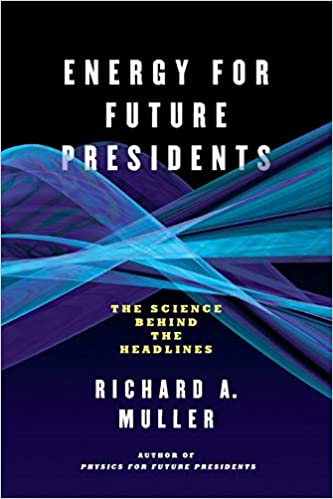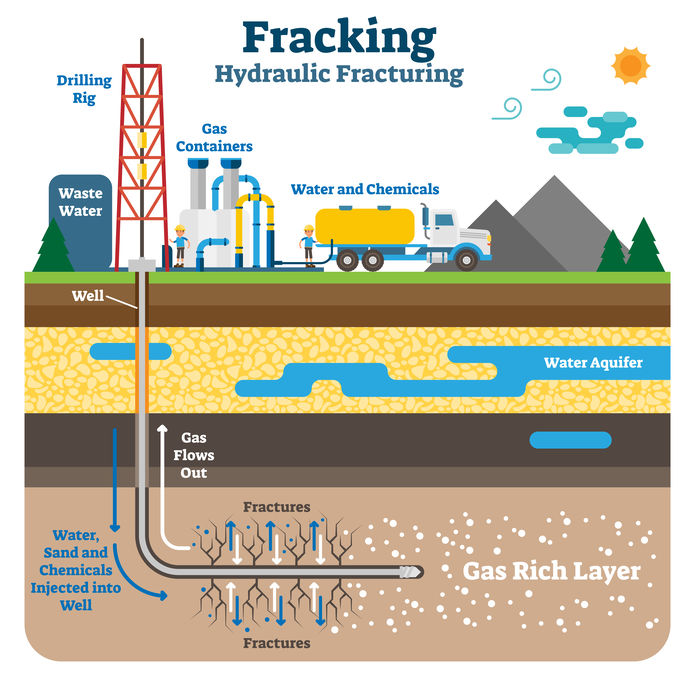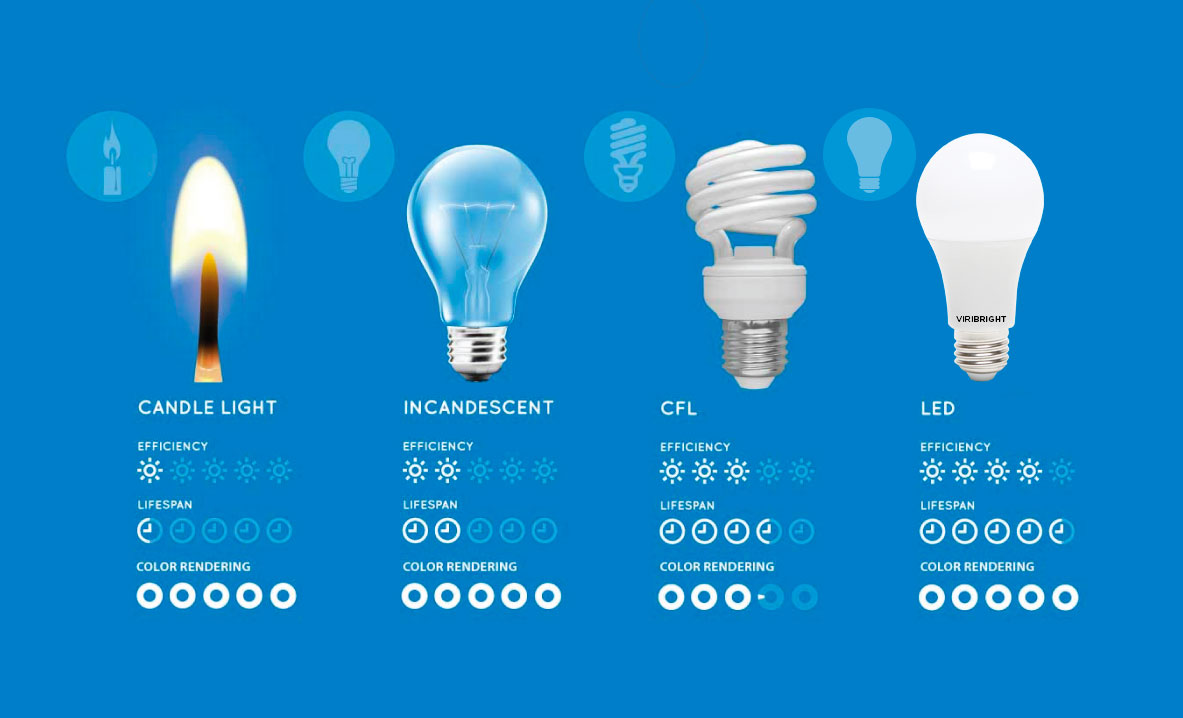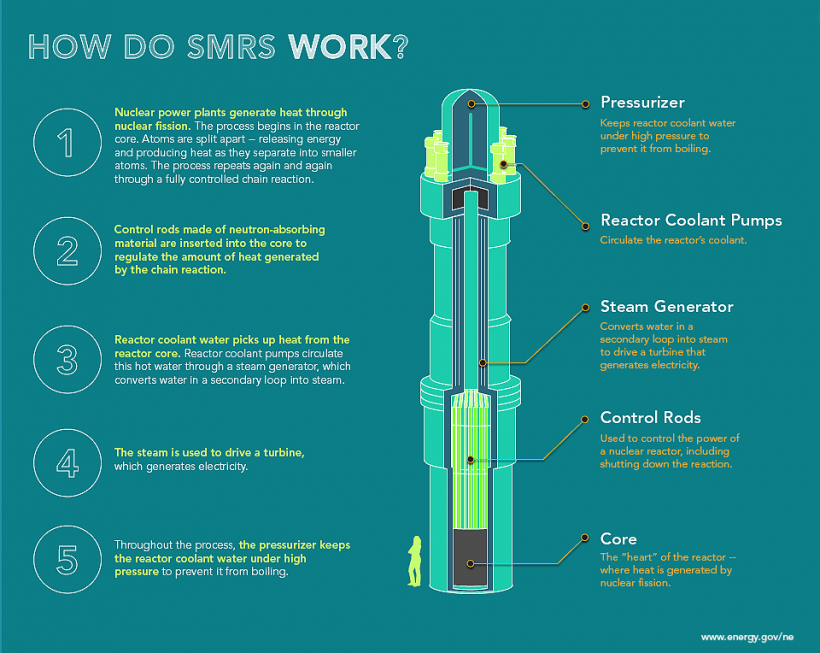The Non-fiction Feature
This week’s compelling non-fiction book
Also in this Weekly Bulletin:
The Children’s Spot: My First Science Library for Babies by Chris Ferrie
The Product Spot: Bee’s Wrap
Please note that this book was written in 2012, and technology has since advanced considerably. Nonetheless, the book provides unconventional insights into the world’s energy usage that are worth investigating.
The Pithy Take & Who Benefits
Energy, abstract yet ubiquitous, permeates every part of our lives. Turning on a light, buying a toothbrush online, driving to the grocery store, or sending a text requires energy. Where does it come from? How is it transferred? What impact does it have on the planet? And are there ways to make it more efficient and sustainable? Richard Muller, a physics professor at the University of California, Berkeley and the founder of the Berkeley Earth Surface Temperature project, examines the world’s main sources of energy (e.g., fossil fuels), the alternatives (e.g., solar and wind), global warming, and how it all connects to the world’s sensitive energy economy.
Muller emphasizes that he is, above all, a scientist, and he comes at the subject of energy—which is often suffocated by emotion and misinformation—armed with scientific knowledge and experiments that lead to surprising conclusions. His policy suggestions might not be implemented, but they are certainly worth considering. I think this book is for people who want to understand: (1) how to realistically address global warming; (2) how economically-viable alternative sources of energy can be utilized; and (3) how energy security can be bolstered.
Preliminaries
- Chocolate chip cookies deliver 7.7x more energy than an equal weight of TNT. But TNT releases its energy faster, thus delivering higher power and creating larger force—power is the rate of energy delivery.
- Energy is an essential commodity; the world is so sensitive to energy that disruption in Libya, which supplied only 2% of the world’s oil, triggered a 10% spike in oil prices.
- When creating energy policy and championing new technology, it’s crucial to consider the practicality of the developing world implementing the policy and technology.
- 1 gigawatt = 1 billion watts (a typical lightbulb is around 70 watts).
The Outline
The Energy Landscape
Global Warming and Climate Change
- Human use of fossil fuels has increased so much that levels of carbon dioxide (CO2) in the atmosphere increased 40%. (CO2 traps heat radiation.)
- Muller organized a study of all the world’s available thermometer measurements, including over 40,000 recording stations, which amounted to 1.6 billion temperature measurements.
- His group confirmed the findings of others: There was a 0.9℃ temperature rise over the last 50 years.
- Then, they charted CO2 levels over the same period and realized it was a smooth fit, which means that CO2 caused the warming.
- CO2 will likely double its pre-industrial levels by 2052. 40 years later, there will be another 1.6℃ rise over land and a 1.1℃ rise worldwide, and so on every 40 years.
- Local variability: ⅓ of the US temperature stations recorded a temperature decrease in the last 100 years.
- Global warming is not evident at individual stations, but it is evident in the average global temperature, because local climate is much more variable.
- Hurricanes, tornadoes, and polar warming do not necessarily prove global warming, but sea level rise does (sea level rose 8 inches in the last century—warm water expands).
- How to stop global warming: Help developing countries.
- China emits 5x the amount of CO2 that the US does, and will surpass US per capita emissions by 2025.
- It’s likely that only affordable yet profitable green alternatives, which provide economic benefits to developing nations, will work.
- For example, China could switch from coal to natural gas as its source for electricity. Natural gas emits only half the CO2. Low-cost solar, wind, and nuclear power will be useful as well.
Energy Security
- An enormous amount of energy flows through the US each day, and the largest energy sources are oil, coal, and natural gas—the fossil fuels made from plant life that lived 300 million years ago. Every day, each person in the US uses, on average:
- 18 lbs of coal;
- 16 lbs of oil; and
- 10 lbs of natural gas.
- Generating this much power takes 300 tons of fossil fuel every second.
- Liquid energy security: There’s no energy crisis, but there is a liquid fuel crisis. However, alternative energy is more expensive than fossil fuels.
- Saudi Arabia can drill its oil for about $3 per barrel. The current barrel prices, $70 – $100 and more, means large profits, and the price skyrockets whenever demand exceeds supply. It’s difficult for alternative energy to compete monetarily.
- Natural gas
- The most important energy development is that enormous reserves of natural gas trapped in shale, a sedimentary rock, are recoverable.
- Several large power companies have replaced coal power plants with natural gas, which provides ¼ of US energy.
- Natural-gas vehicles will be critical, because natural gas can be compressed, has an energy of 11 kilowatts-hours per gallon, and is 10x better than lithium-ion batteries.
- A person can convert an existing vehicle to natural gas by using a conversion kit that costs around $3,000.
- The cost of natural gas to drive 1 mile is about 4 cents; the cost of gasoline to drive 1 mile is 10 cents.
- There are over 12 million natural-gas vehicles, but only about 150,000 are in the US (mostly taxis and buses).
- The main downside is range: Natural gas can only provide ⅓ the distance as the same amount of gasoline.

Image from the CA Natural Gas Vehicle Coalition
- Fracking and horizontal drilling
- Hydraulic fracturing, known as fracking, is one of the two key technologies for shale gas. In 2002, Devon Energy Corporation combined it with a second technology, called horizontal drilling.
- Drill into the shale layer and then send down high-pressure water.
- If the pressure provides a greater force than the weight of the rock above, the rock will crack to let in the water.
- That cracking allows gases absorbed on internal pores to escape. Release the pressure, and the water comes back, along with the gas.

Image from the Committee for a Constructive Tomorrow
- Hydraulic fracturing, known as fracking, is one of the two key technologies for shale gas. In 2002, Devon Energy Corporation combined it with a second technology, called horizontal drilling.
- Environmental fears: The used water is polluted and dumped into the local water. Natural gas could leak into the atmosphere, and it’s 23x more potent than CO2.
- This problem can be solved with strong legislation that requires all waste from fracking to be drinkable by humans. Make the fines big; fracking is profitable and cleanup is affordable.
- Shale gas reserves
- The US has large swaths of economically recoverable gas from shale, while China has enough to last 400 years.
- Natural gas produces only half the greenhouse gas that coal does, for the same energy, and its local pollutants are much lower.
- Shale oil, like shale gas, is trapped in rock. The amounts of shale oil in the US are huge, over 1.5 trillion barrels, which would last 200 years.
- Oil companies have been developing ways to extract the oil and initial tests have been successful.
- Shale oil production would have a large and positive impact on the US balance of trade, but be environmentally disastrous.
Energy Productivity:
- Subsidize insulation in houses.
- Assume a person spends $1,000 on insulation, and in 6 years they would have saved that amount in energy costs. They’ve increased their house’s value, and the capital pays in the form of reduced heating and cooling costs forever.
- Subsidize the replacement of incandescent light bulbs with compact fluorescent lights (CFL) in homes and buildings.
- CFLs are cheaper and far more energy efficient.
- For big companies that invest in millions of bulbs, this amounts to a spectacular 209% annual return.

Image from Viribright
- Make cars more efficient.
- Cars are inefficient when accelerating, but hybrid technology creates high efficiency during acceleration by using a battery booster.
- Lightweight materials are crucial (this does not make the car unsafe—light Japanese and German cars are as safe as heavy US cars).
- Energy-efficient fridges: These now use 72% less energy and the price dropped as well; this change resulted from market competition and government-mandated efficiency.
- Feel-good measures that don’t necessarily work
- Public transportation saves enormous energy in crowded urban environments, but wastes energy in the suburbs and countryside.
- Recycling paper neither saves trees nor reduces greenhouse emissions.
Alternative Energy
Solar
- In a square mile, the sun delivers 2.6 gigawatts of power.
- The biggest potential in solar energy isn’t solar-thermal power plants.
- Instead, it’s in solar cells (photovoltaic cells). These thin wafers absorb sunlight and produce electricity directly.
- In the photoelectric effect, an incoming photon (a particle of light) knocks an electron away and lands on a metal electrode. When the electron moves from the electrode to a wire, it’s electricity, and it carries a bit of the photon’s energy.
- To limit emissions, there must be an energy technology that doesn’t produce CO2 that the developing world can afford; it could be solar.
Wind
- The good winds are up high (winds at 200 feet are typically 2x the velocity of wind at 20 feet). A turbine can extract up to 59% of the energy.
- Wind power capacity has been doubling every 3 years. Turbines are relatively inexpensive to make and don’t require fuel.
- Overall, though, it’s still more expensive than natural gas.
- The main problem is that the strongest winds are far from population centers. Delivering the power will require a modernized power grid.
Nuclear Power
- Nuclear power plants cannot blow up like atomic bombs.
- Nuclear reactors are expensive, but the electricity it produces isn’t necessarily expensive. Once the building loan has been paid, they provide some of the cheapest power available.
- It takes around $7 billion to install 1 gigawatt of capacity (4x the cost of building a natural gas plant).
- But, adding in fuel and operating costs, the cost of electricity from nuclear power is cheaper than from any other source except hydroelectric dams.
- 80% of the cost of electricity comes from paying back the loans (whereas, for natural gas, only 18% of the cost is for capital investment; the rest is for fuel).
- Another option is to build small modular nuclear reactors—ones that produce only 300 megawatts of electric power or less.

Image from the US Office of Nuclear Energy
- It takes around $7 billion to install 1 gigawatt of capacity (4x the cost of building a natural gas plant).
- Storing nuclear waste isn’t a difficult technical problem, it’s a difficult political problem.
- Fukushima – In 2011, a 9.0 magnitude earthquake struck Japan. It spawned a 30-foot-tall tsunami that killed more than 15,000 people and destroyed over 100,000 buildings.
- Fukushima Dai-ichi, the nuclear power plant on the coast, had been designed to survive a large earthquake, but nobody anticipated a 50-foot tsunami. The reactor was severely damaged.
- The reactor did not explode—not based on engineering, but on the physics of the reactor itself. However, volatile gases did spew out.
- Radiation damage to the body is measured in units called “rem.” A small number of rem can trigger an eventual cancer.
- Thanks to the evacuation, the total number of deaths due to radioactivity will be around 100 cancer deaths, which is terrible, but small compared to the 15,000 tsunami deaths.
- Fukushima Dai-ichi, the nuclear power plant on the coast, had been designed to survive a large earthquake, but nobody anticipated a 50-foot tsunami. The reactor was severely damaged.
- The Denver Dose: Denver, CO has high natural radioactivity (from radioactive radon gas emitted from uranium in local granite). Despite this, Denver has a lower cancer rate than the rest of the US.
- The International Commission on Radiological Protection recommends evacuation when radiation exceeds 0.1 rem per year. But Denver’s dose is 0.3 rem per year.
- In the future:
- Make a nuclear plant strong enough that if it’s damaged, the harm done by the release of radioactivity is small compared to the damage done by the root cause (tsunami, earthquake, etc.).
- In disaster response, ignore radioactivity that is less than the Denver Dose.
Electric and hybrid vehicles
- Electric cars receive an inordinate amount of unchallenged hype.
- Electric batteries can store only 1% of the energy per pound that gasoline can, and the main cost for electric autos is in the batteries.
- The best bet for the future of electric cars may be to incorporate the lead-acid batteries used to start ordinary cars, which are cheap.
- Ordinary hybrids make economic sense and shouldn’t be classified with other electric automobiles. They get around 50 miles per gallon of gasoline.
- For example, the Toyota Prius uses a small battery when the car is initially accelerating, and it recharges when the car slows down.
- Instead of dumping the kinetic energy of the car into heat, as brakes do, it uses regenerative braking: a wheel turning an electric generator requires force, which slows the car.
- If the battery runs down, then it’s recharged by the gasoline motor.
- The Prius doesn’t use its battery when the car is coasting; it uses the expensive-to-replace battery only during those short moments of high inefficiency.
- For example, the Toyota Prius uses a small battery when the car is initially accelerating, and it recharges when the car slows down.
Clean coal (carbon sequestration)
- Coal is the filthiest fuel: It produces 2x as much CO2 as does natural gas, creates acid rain that destroys forests and changes the acidity of nearby lakes, and spews serious air pollution that causes intense health issues.
- Carbon sequestration: prevents coal-generated CO2 from getting into the atmosphere. Can CO2 be buried at an affordable price, and will it stay buried over the long term?
- CO2 could be stored in empty coal mines and depleted oil and gas wells, or underground reservoirs currently containing salt brines.
- These have no commercial value, are all over the world, and can trap carbon for hundreds of thousands of years.
- Over 11 million tons of CO2 has already been sequestered in such brines.
- CO2 could be stored in empty coal mines and depleted oil and gas wells, or underground reservoirs currently containing salt brines.
- This may be the only long-term hope to battle global warming, but won’t be cheap.
- In 2011, China produced over 4 trillion kilowatt-hours from coal-generated electricity. It will cost around $120 billion per year to sequester.
- The US could send that amount of money to help China sequester its emissions (China builds a new gigawatt coal plant every week.)
- But, a more realistic solution would be to encourage China to convert from coal to natural gas. That’s a 50% reduction in CO2 emissions.
Policy advice
- The true energy crisis in the US is addressing energy security and global warming.
- The security problem comes from oil shortage: the growing gap between domestic oil production rate and the high oil demand.
- This forces the US to import enormous amounts of oil, resulting in military insecurity and a huge balance-of-trade deficit that threatens the economy.
- The only plausible and economically-viable method is large-scale conversion from coal to natural gas.
- The global-warming problem derives primarily from rapidly growing coal use in the developing world. Conversion to natural gas is critical.
- The security problem comes from oil shortage: the growing gap between domestic oil production rate and the high oil demand.
- Hybrid vehicles, combined with lightweight but strong materials, will be one of the most effective means for improving mileage.
- Nuclear power will be crucial in reducing the developing world’s emissions and can be safe and viable for the US as well.
- Improve the electric grid, which will make wind and solar more accessible and profitable.
- Subsidies only make sense if they inspire rapid competitive development. (The plunging cost of solar is due to a combination of subsidies and competition.)
- Decoupling plus: Utilities make an investment on behalf of the public and share the profits.
- For example, a person lives in a state that produces and uses 30 gigawatts of electricity. Next year it will need 31 gigawatts, and a utility company plans to build a 1 gigawatt plant.
- Virtually all the cost, $10 billion, is in the building.
- Cost of electricity is $0.15 per kilowatt-hour, so revenue will be $1.3 billion. The return on investment will be 13% per year.
- The state offers a proposal. Because conservation is so effective, the utility company should invest in conservation measures, such as subsidizing energy-efficient fridges, better air conditioners, compact fluorescent lights, or insulation. These investments have huge returns that go to the consumer.
- The return is about 2.5x greater than the return on a new power plant.
- So, instead of investing $1 billion, the utility company invests $1 billion/2.5 = $400 million.
- This reduces next year’s energy needs from 31 gigawatts to 30, so there’s no need for a new power plant.
- In return, the state raises the electricity rate up to $0.1505 cents, and the revenues jump to $30.1 billion. It’s an interest rate of 25%, which beats the original 13%.
- For the consumer, with average use through conservation, consumption falls by 3%, and the amount the public pays actually decreases by 2.7%.
- For example, a person lives in a state that produces and uses 30 gigawatts of electricity. Next year it will need 31 gigawatts, and a utility company plans to build a 1 gigawatt plant.
And More, Including:
- Close examination of the chemistry required to explode nuclear bombs and why that won’t happen in a nuclear reactor
- Discussion of the global-warming controversy and why people on both extremes make an educated debate nearly impossible
- The histories and experiments in alternative energies: Fusion (Tokamak, beam, muon, and cold), coal (coal bed methane and gasification), fuel cells, biofuels (and why corn ethanol isn’t a biofuel), hydrogen power, geothermal power, tidal power, wave power, synfuel, and high-tech fossil fuel
- The importance of payback periods and effective interest rates in good energy policy
- An explanation of Hubbert’s Peak, the McKinsey chart, and the profitability of conservation
- Summaries on different types of energy storage, such as fuel cells and their viability
- Analysis of the Deepwater Horizon Oil spill and why politicians shouldn’t use that hyperbole to prohibit offshore drilling (not that there aren’t other reasons, just that this spill shouldn’t be one of them)
Energy for Future Presidents: The Science Behind the Headlines
Author: Richard A. Muller
Publisher: W. W. Norton
Pages: 368 | 2012
Purchase
[If you purchase anything from Bookshop via this link, I get a small percentage at no cost to you.]




